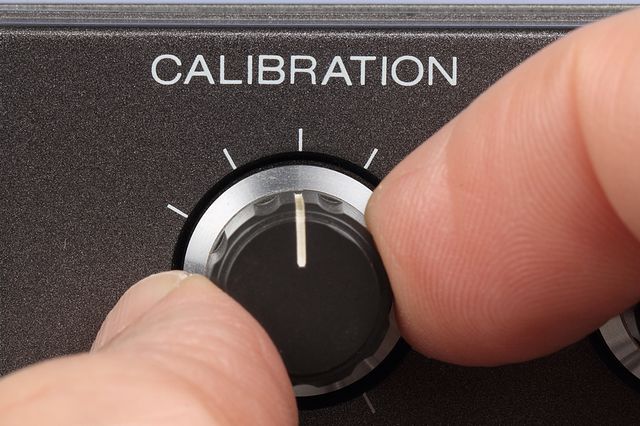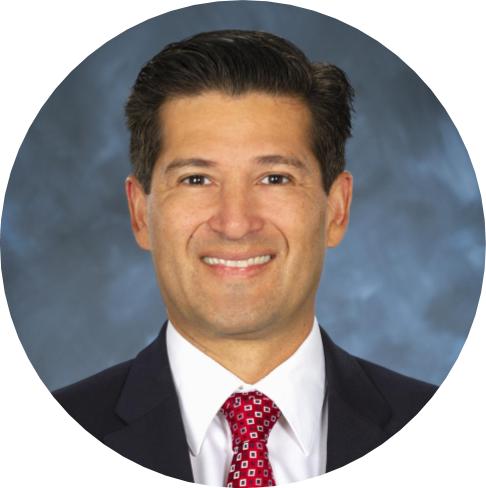Calibration Methods & Best Practices: Ensuring Quality and Efficiency
.jpg?h=433&iar=0&w=640)
As a Tektronix we understand the critical role that calibration plays in maintaining the accuracy and reliability of test, measurement, and diagnostic equipment. Calibration is not just a technical requirement; it's a strategic practice that can significantly impact a company's bottom line by minimizing product defects, reducing recalls, and enhancing the reputation for consistent quality. Here, I’ll share some essential calibration best practices to help you optimize your calibration processes.
What is Calibration?
Calibration is the process of comparing a measurement device (an unknown) against a reference standard to determine how far the unknown is from the standard. This comparison ensures that the measurement device provides accurate and reliable results. A typical commercial calibration uses the manufacturer’s calibration procedure and a reference standard that is at least four times more accurate than the instrument under test.
Why Calibrate?

Calibration is crucial because out-of-tolerance (OOT) instruments can lead to unreliable products, customer dissatisfaction, and increased warranty costs. OOT conditions may also cause good products to fail tests, resulting in unnecessary rework costs and production delays. Regular calibration helps maintain the accuracy of instruments, ensuring product quality and operational efficiency.
Key Calibration Terms
- As found data: The reading of the instrument before adjustment.
- As left data: The reading of the instrument after adjustment or "same as found" if no adjustment was made.
- Optimization: Adjusting a measuring instrument to make it more accurate, often referred to as "optimizing" or "nominalizing."
- Out-of-tolerance (OOT) condition: When an instrument's performance is outside its specifications.
- Test uncertainty ratio (TUR): The ratio of the accuracy of the instrument under test compared to the accuracy of the reference standard.
- More calibration terminology can be found here.
Quality Management Systems and Accreditation
Calibration is a key component of quality control. Adherence to ISO 9001:2008 standards ensures that a company's quality management systems and processes consistently deliver quality products and services. Key requirements include:
- A comprehensive equipment list with controls for additions, subtractions, and custodianship.
- Proper identification of calibrated and "no calibration required" items.
- Documented calibration procedures based on the manufacturer’s recommendations.
- Assignment of responsibility for equipment return to the calibration lab.
- An OOT investigation log for any instrument found OOT.
- Proper documentation of all critical aspects of calibration.
- A proper calibration schedule with timeframes for scheduling calibration and provisions for due-date extensions.
- Traceable assets to the National Institute of Standards and Technology (NIST) in the U.S.
- Properly trained technicians for each discipline involved in performing calibration.
Calibration Program Best Practices
A successful calibration program begins with an accurate calibration schedule for all test, measurement, and diagnostic equipment. The schedule should include:
- A unique identifier for tracking the instrument, its location, and custodian.
- Modules, plug-ins, small handheld tools, and any "home-made" measuring devices.
- Procedures for adding new instruments, removing old or disposed instruments, and changing instrument custodianship.
- Sufficient time for both the end user and service provider to calibrate the unit with minimal impact on production.
- A late report identifying any units about to expire or already expired.
- Utilize a comprehensive calibration management application like Tektronix's CalWeb Calibration Management SaaS Application. It helps streamline the calibration process and maintain an organized and efficient calibration program.These software applications provide:
- Real-time tracking of calibration status
- Automated scheduling, and detailed reporting
- Store calibration certificates and calibration data for each of your assets
- Management of out of tolerance events
- Integrations with other asset management applications via API
Determining Calibration Intervals
Calibration intervals are determined by the instrument "owner" based on the manufacturer’s recommendations and other factors such as required accuracy, the impact of an OOT event, and the instrument's performance history.
Avoiding Production Delays
To avoid costly downtime, consider the following steps:
- Use a calibration service provider like Tektronix that can perform onsite calibrations, especially if 20 or more instruments are being calibrated.
- Choose a Multi-Brand (single-source) calibration provider with the capability to calibrate nearly all equipment during the onsite visit. Tektronix offers Multi-Brand calibration services to a broad range of instrument brands.
- Consider additional options like calibrations during shutdowns, mobile calibration lab services, pre-calibrated equipment exchanges, scheduled pick-up and delivery and weekend or night calibrations.
Outsourcing Calibration
Many companies find it more effective to outsource calibration due to the high cost of standards, the need for developing procedures, lower productivity of internal calibration labs, and the management burden. Outsourcing allows companies to focus on their core competencies while ensuring accurate and reliable calibration services.
By following these best practices, you can ensure that your calibration processes are efficient, cost-effective, and aligned with industry standards. At Tektronix, we are committed to providing superior calibration services that help our partners maintain the highest levels of quality and reliability. Learn more about the Tektronix Service Solutions and how its experts can help your team.


